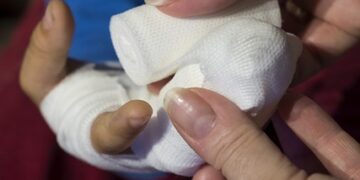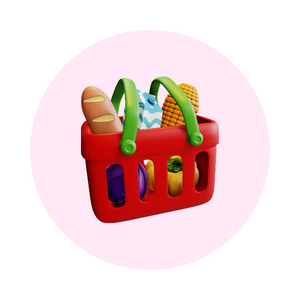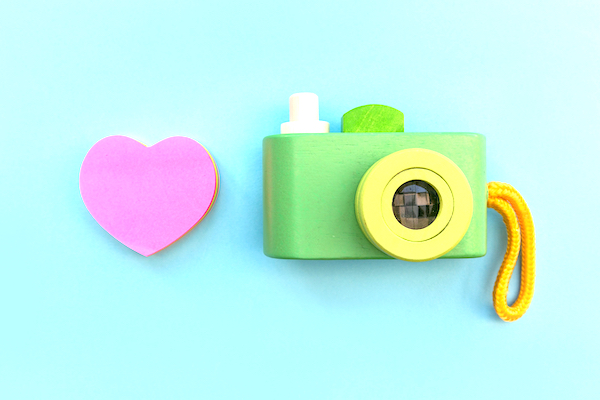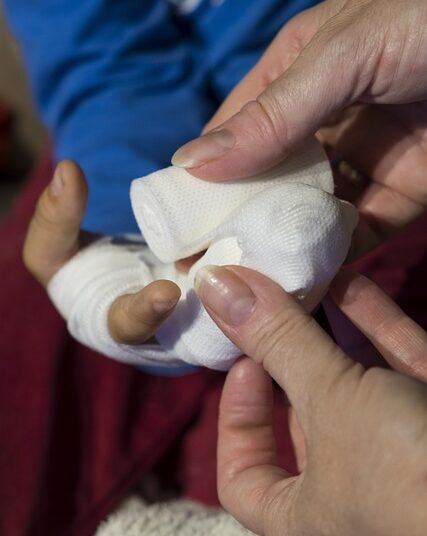In emergencies, the ability to administer first aid can mean the difference between life and death. A hands-on first aid class equips you with essential skills to manage various medical situations until professional help arrives. This training enhances your confidence and empowers you to act effectively in critical moments.
Through practical exercises and real-world scenarios, these classes ensure you gain the competence to respond swiftly and efficiently. Mastering first aid is invaluable, whether aiming to help family members, colleagues, or strangers. Here’s what you can expect from a hands-on first aid class.
1. Comprehensive CPR Training
A pillar of hands-on first aid class, cardiopulmonary resuscitation (CPR) is something you really must master. You will learn the proper CPR procedures for adults, children, and newborns in a hands-on first-aid session. These covers using automated external defibrillators (AEDs), rescue breaths, and chest compressions. The practical aspect of the class lets you experience these abilities realistically by practicing on mankind.
Personalized teacher comments also help you guarantee the proper use of the techniques. This practical method aids in developing muscle memory, which is essential under great stress. Besides, you’ll learn how to evaluate a scenario to decide whether CPR is required, improving your decision-making ability under duress.
2. Managing Bleeding and Wounds
Another vital ability taught in first aid classes is wound and bleeding management. You will learn several methods for stopping bleeding, including bandages, pressure, and creative use of tools. Practical activities could involve honing these skills on modeled injuries or among other students.
Also emphasized is the knowledge of the several forms of bleeding—arterial, venous, and capillary—as each calls for a different treatment. The course will walk you through the strategies to avoid shock and how to identify its symptoms. These practical exercises will help you become adept at quickly and precisely controlling wounds, which can affect a victim’s likelihood of recovery.
The training also addresses how to securely remove foreign objects when needed and how to treat more difficult injuries, including impalements. Further, you’ll learn infection control techniques and how to keep sterile surroundings to stop more issues. By the end of this course, you will be qualified to confidently and skillfully manage a broad spectrum of bleeding and wound situations.
3. Treating Burns and Scalds
Burns and scalds are common injuries that need quick attention, and first aid classes give thorough instruction on treating various degrees of burns. You will learn how to control discomfort, cool the burn, and cover it with sterile coverings.
Practical sessions might teach how to apply dressings and tell mild from severe burns. Teachers will also review the need to avoid infection and the actions to follow should a burn victim experience shock. These practical lessons guarantee your ability to manage burn injuries, reduce damage, and encourage healing confidently.
The knowledge acquired here is beneficial because burns can occur in familiar places like kitchens or offices. The program will also address how to treat electrical and chemical burns, which call for management methods. You will discover the need to eliminate the burn’s source and how to clean the impacted area gently.
Knowing the several layers of the skin and the level of burns facilitates your evaluation and response.
4. Dealing with Choking
Choking is a life-threatening emergency that requires immediate action. In a hands-on first aid class, you will learn methods, including the Heimlich maneuver and back blows, to clear the airways of obstacles. Training manikins or working with partners will help you feel the proper force and placement to execute these moves effectively.
Classes also include how to treat newborn choking, which calls for a different method. The training’s pragmatic component guarantees that, should someone be choking, you can react fast and forcefully. You will also learn when to call for emergency medical help and how to identify the symptoms of partial and total airway obstructions.
Further, the training addresses how to help yourself if you are choking and alone. From dining out to looking after young children, this all-encompassing method guarantees you are ready to manage choking crises in many contexts.
5. Handling Fractures and Sprains
First aid training also addresses fracture and sprained care. You will learn how to immobilize injuries using splints and slings, preventing further harm until trained medical help arrives. One practical activity might be making temporary splints using available materials and correctly fastening them.
Recognizing the signs of fractures and sprains is crucial, and classes often include case studies or simulations to enhance your diagnostic skills. Instructors will walk you through the safe movement of an injured person. These practical exercises guarantee you are ready to offer necessary support, lower discomfort, and avoid problems in people with musculoskeletal injuries.
You will learn the proper first aid for several kinds of fractures—closed, open, and stress fractures. The class also addresses RICE (Rest, Ice, Compression, Elevation) methods for managing swelling and pain. By the end of the class, you will ultimately know how to treat fractures and sprains, guaranteeing your ability to offer good care and help in these circumstances.
Conclusion
A hands-on first aid class provides you with the knowledge to confidently and successfully control crises. Mastery of procedures using real-world experience helps you to be more ready to save lives and offer vital support in many contexts. Enrolling in a first aid class is an investment in your capacity to make a difference when most importantly needed.


 YOU
YOU





 Money
Money





 FOOD
FOOD





 FAMILY LIFE
FAMILY LIFE




 HOME & GARDEN
HOME & GARDEN







 ORGANISE
ORGANISE

 EVENTS
EVENTS





 LIFESTYLE
LIFESTYLE


















